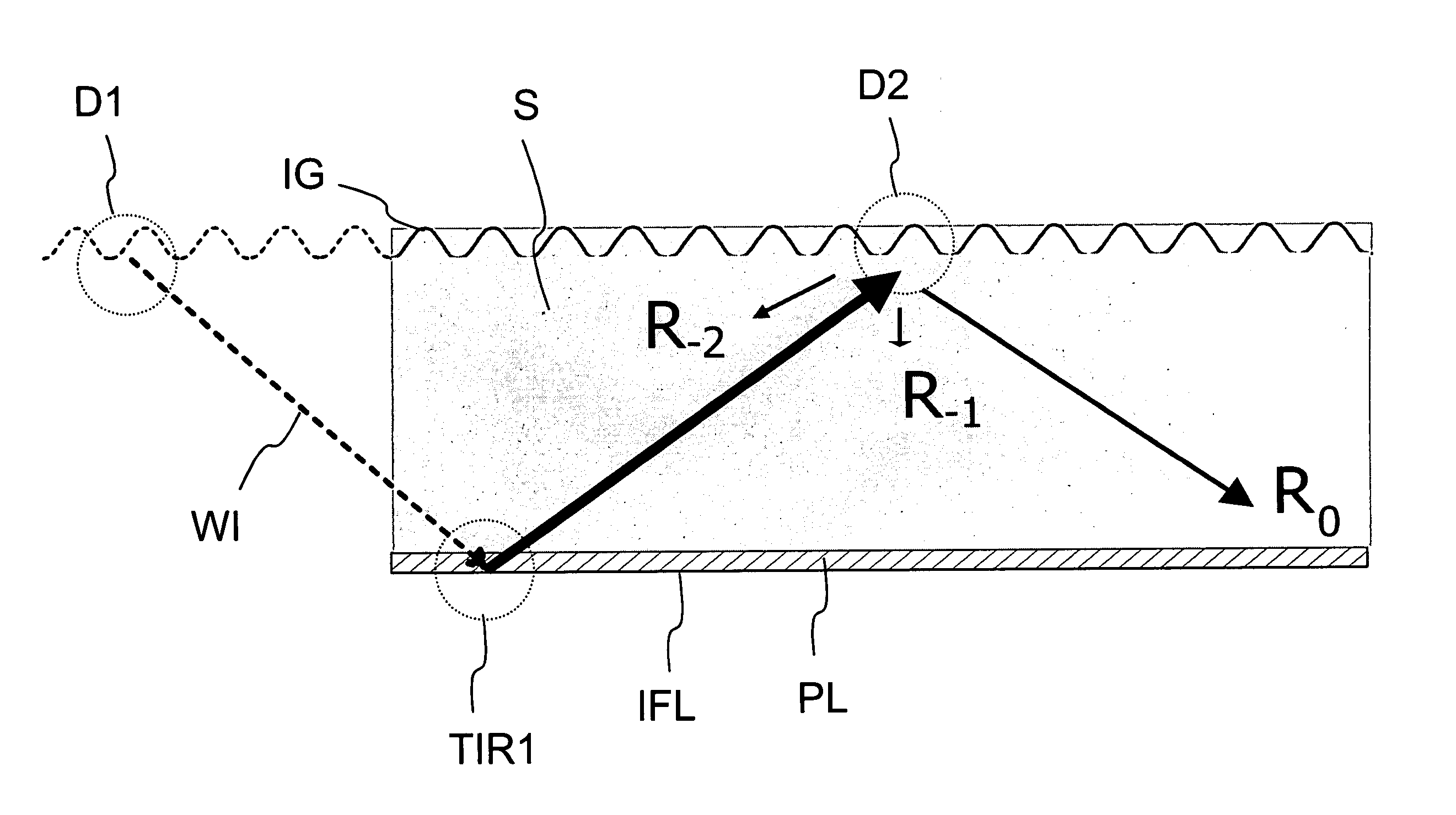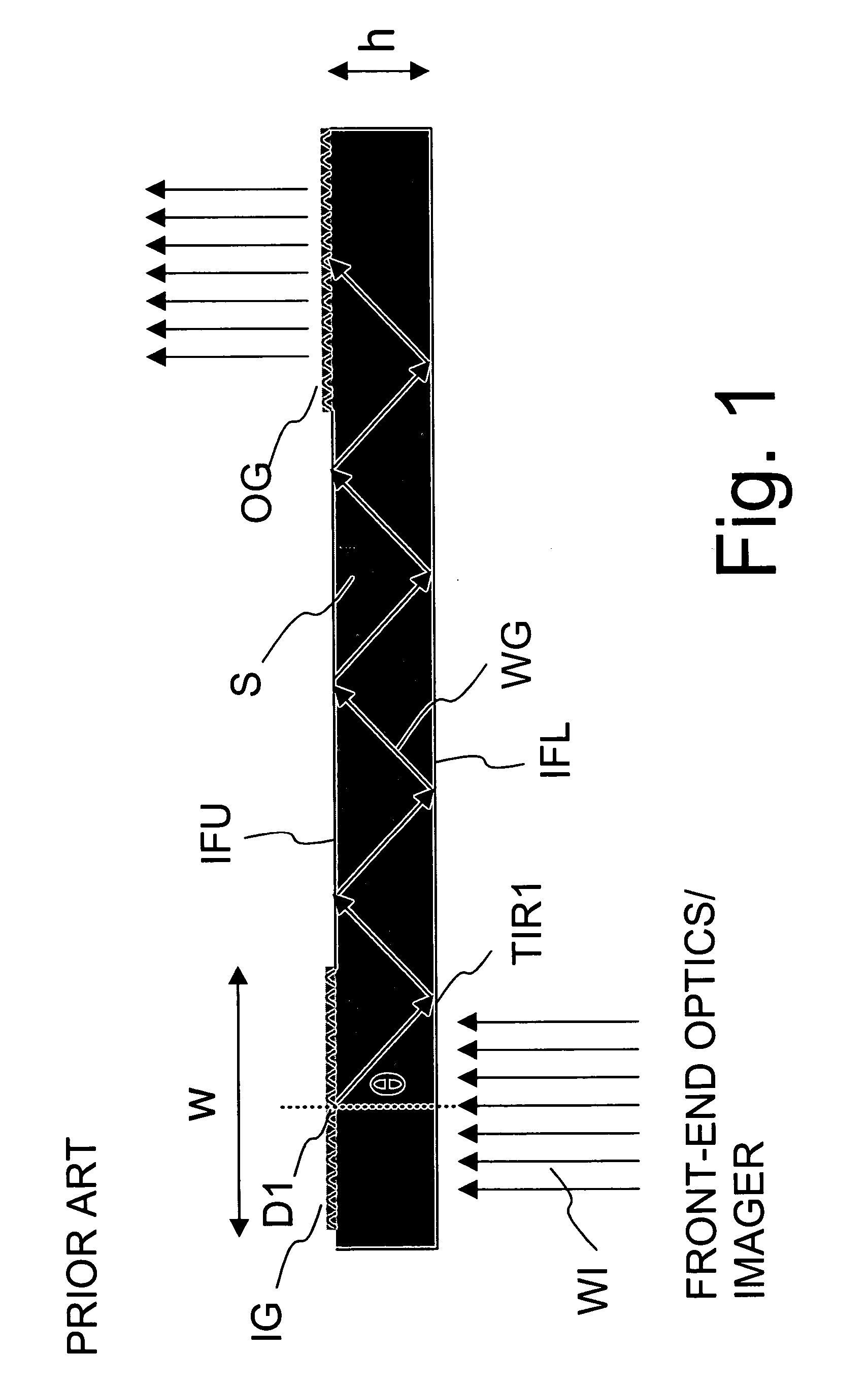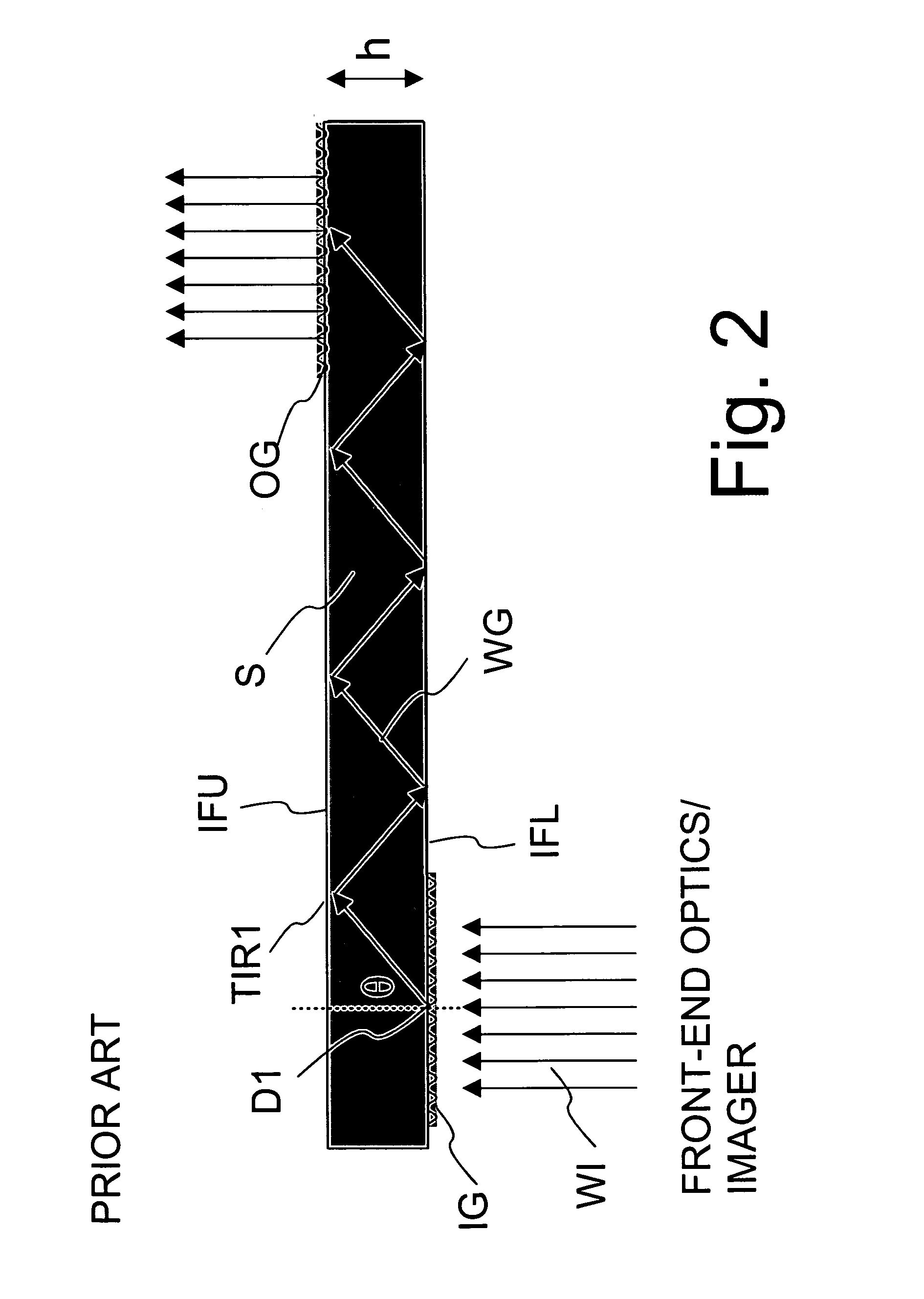Method and optical system for coupling light into a waveguide
a waveguide and waveguide technology, applied in the field of planar waveguide coupling, can solve the problems of reducing the quality of reproduced virtual images, affecting the reproduction effect, and requiring prior art solutions, and achieve the effect of increasing the width w of the in-coupling grating ig
- Summary
- Abstract
- Description
- Claims
- Application Information
AI Technical Summary
Benefits of technology
Problems solved by technology
Method used
Image
Examples
Embodiment Construction
[0034]It is to be understood that the drawings presented herein are designed solely for purposes of illustration and thus, for example, not for showing the various components of the devices in their correct relative scale and / or shape. For the sake of clarity, the components and details which are not essential in order to explain the spirit of the invention have been omitted in the drawings.
[0035]FIGS. 1 and 2, which present solutions known already from the related art, have already been discussed above.
[0036]FIG. 3 illustrates schematically the second interaction / diffraction D2 of the light wave WI upon the in-coupling grating IG in a prior art type situation after the light wave has already experienced the first interaction / diffraction D1 and subsequent first TIR1.
[0037]In order to fulfil conditions for TIR and to keep the reflection angles modest, the refractive index of the substrate material S should be as high as possible. In this study a high refractive index plastic (n=1.71)...
PUM
 Login to View More
Login to View More Abstract
Description
Claims
Application Information
 Login to View More
Login to View More - R&D
- Intellectual Property
- Life Sciences
- Materials
- Tech Scout
- Unparalleled Data Quality
- Higher Quality Content
- 60% Fewer Hallucinations
Browse by: Latest US Patents, China's latest patents, Technical Efficacy Thesaurus, Application Domain, Technology Topic, Popular Technical Reports.
© 2025 PatSnap. All rights reserved.Legal|Privacy policy|Modern Slavery Act Transparency Statement|Sitemap|About US| Contact US: help@patsnap.com



